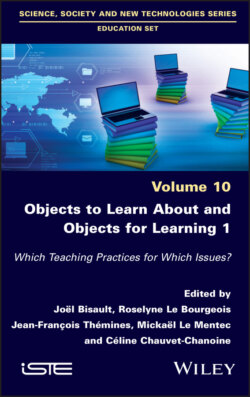Читать книгу Objects to Learn about and Objects for Learning 1 - Группа авторов - Страница 18
Introduction
In the Teaching Resources Store Cupboard: Investigating the Functions and Uses of Objects in the World of School
ОглавлениеFrom the ferule to the touchscreen tablet, through alphabet primers to be leafed through or to be embroidered, translating earpieces for lessons, the cuddly toys of the very young, the virtual patients of future doctors, molecular models, home automation systems, the double decimeter, the oscilloscope, the map of the world, the recorder, jacks, marbles… These usual or ordinary, strange or unfamiliar, current or outdated objects are used in teaching and training, learning and education, classroom and playground. Material or virtual, made or disassembled, manipulated or transformed, they fall under the heading of didactic or pedagogical materials by reason of their functions and uses. These functions are multiple because these objects are, on the one hand. aids or resources for the content being taught and. on the other hand, indexing markers or testament to the content being appropriated. These classroom things and objects are thus an integral part of the curricula from nursery school to university. The uses of these objects, and therefore the practices of teachers and pupils, assign to them specific aims and references contributing to the elementarization, progressivity, flexibility and differentiation of the content. Hence, this investigation involves characterizing the contrasting points of view on the objects of this world in order to discuss their usage functions or their esteem functions1 and also their global or technical functions, their authenticity, their schoolification or even their misrepresentation or misappropriation.
The theme of “objects” is dear to me as a specialist of technology and technical education because objects created, put together and assembled, designed and used, analyzed and represented, are at the heart of this area of teaching. This theme is also dear to me because it crosses over between works and reflections devoted to material culture and those relating to technical culture (Lebeaume 2009, 2019a), whose spans are different according to the distinction made by Rabardel (1995), addressed below, between anthropocentric and technocentric perspectives.
This introductory text thus aims to invite an interrogation of the specificities, meanings and conditions for the admission of “objects for learning” and “objects to learn about” into the school world and beyond its borders. It opens by proposing a characterization of school objects and their role, with a cultural and historical perspective. Following on from that, it suggests a problematization of the uses of these objects in teaching practices, linked to the concepts of instrument and artifact. These two main points cover the two most important terms in the title of this work: “objects” and “practices”, as well as the features of all the chapters, which are characterized, on the one hand, by the very great diversity of the “objects” presented or investigated, and on the other hand, by focusing on analyses or testimonies of particularly innovative teaching practices.
